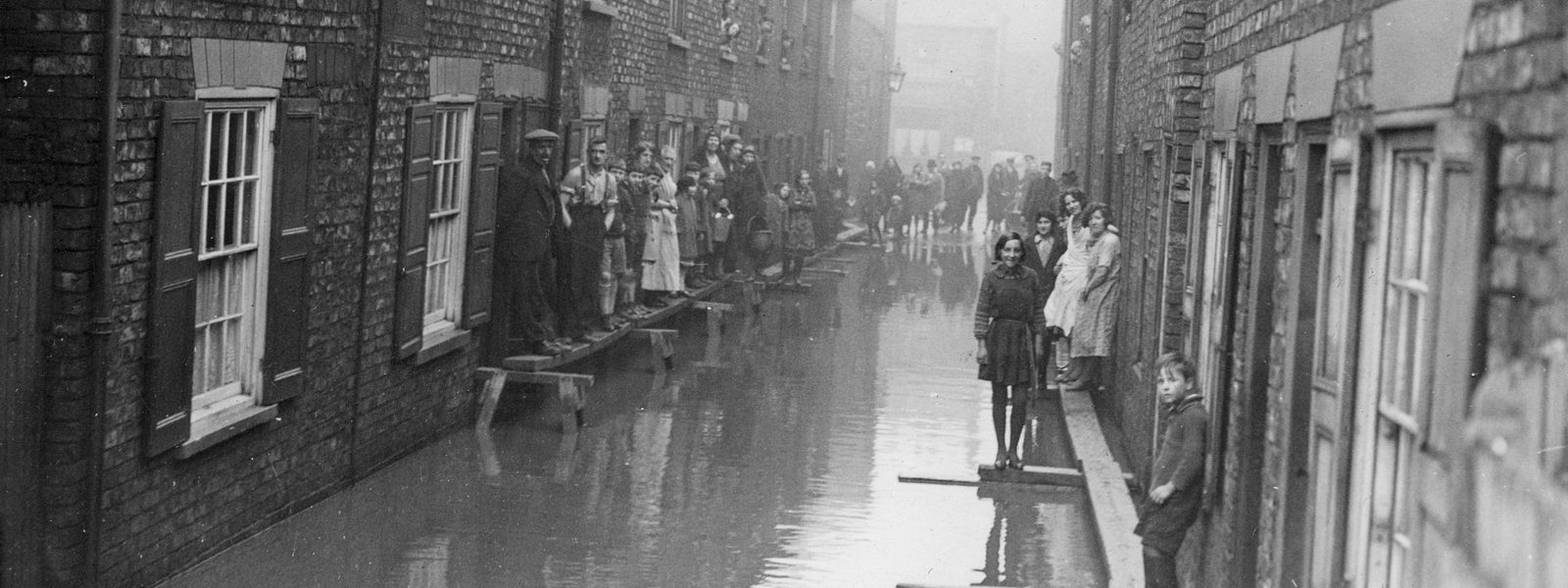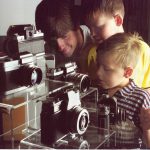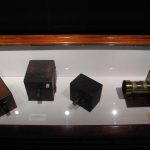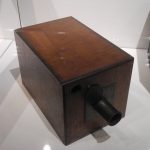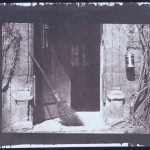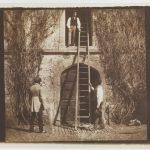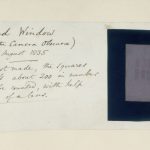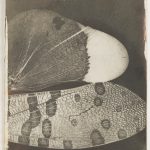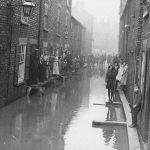The ‘co’ in co-production: Museums, community participation and Science and Technology Studies
Article DOI: https://dx.doi.org/10.15180/160502
Introduction
‘Museums have never been modern, either’ (Latour with Franke, 2010, p 86).
Glass display cases in museums get a bad rap. For anyone wanting to evoke museums as old fashioned, expert-led broadcasters or as creating ‘mausoleums’ for objects by taking them out of the ‘immediacy of life’ the glass case is the perfect scapegoat.[1] Glass display cases are the enforcers of the injunction ‘do not touch’ (Hackner, 2015).
Getting ‘beyond the glass case’, enabling ‘access’ and ‘bringing objects to life’ by seeking alternative forms of display and engagement (Candlin, 2010, 2015; Hetherington 2000, 2002; Kalshoven, 2013; Merriman, 1991) have been of particular concern for those interested in creating museums as participatory spaces. Champions of these initiatives have wanted to create museum spaces where people can come, interact and touch as well as contribute to and shape exhibitions and collections, a process often referred to as ‘co-production’ (Simon, 2008, 2012; Tapsell, 2015).
Yet even as the critical literature on museums has proliferated and even as museum practice has innovated to include many other types of display and ways of enabling access, glass display cases continue to play a key role in how museums work. The fact that glass cases have become so unpopular yet remain so ubiquitous makes what they do a useful place to begin to explore how museums might manage the increasing interest in co-production and, through this, address wider questions of what museums are and what they might become.
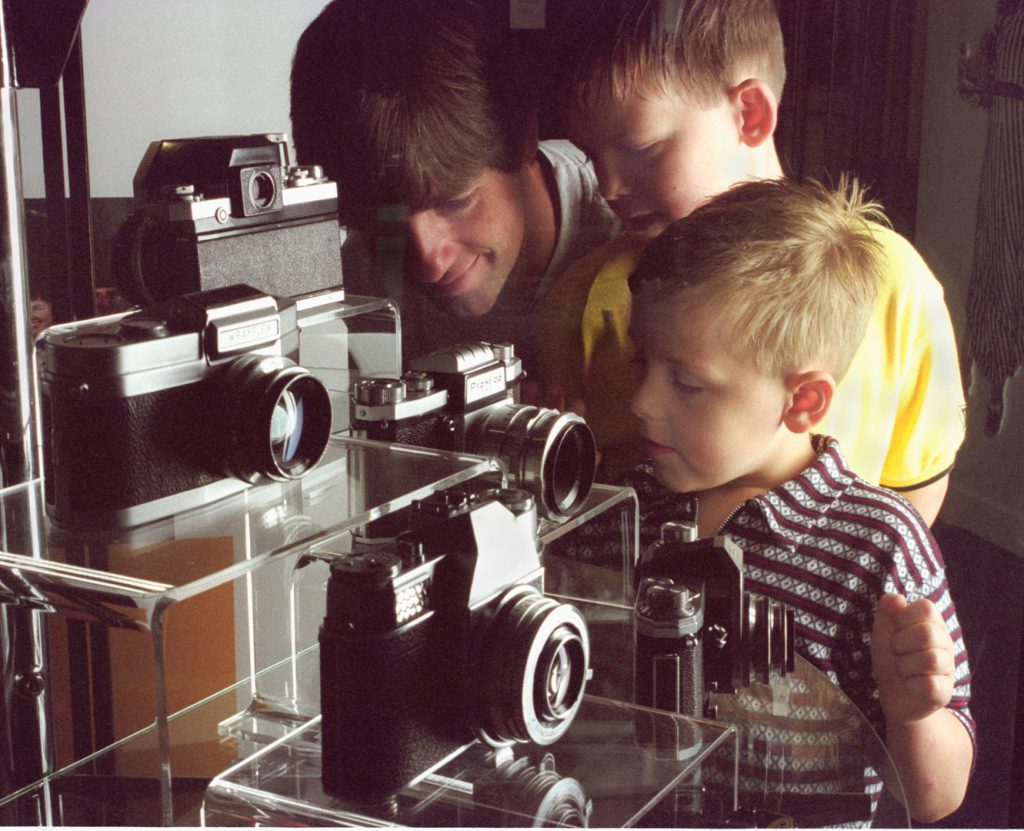
In this essay, I will approach museums both via their glass display cases and via the particular capacities offered by the term ‘co-production’. In doing this I will draw on two genealogies of co-production. The first is focussed on the political question of how public institutions and their publics might better collaborate. It is this ‘public policy’ variant of the term which has most explicitly influenced the use of the term ‘co-production’ in museums. The second comes from Science and Technology Studies (STS). ‘Co-production’, according to Shelia Jasanoff (2004, p 43), was first used in STS by Bruno Latour in his 1993 book We Have Never Been Modern. It has since been widely elaborated to argue that ‘the realities of human experience emerge as the joint achievements of scientific, technical, and social enterprise: science and society, in a word, are co-produced, each underwriting the other’s existence’ (Jasanoff, 2004, p 33). Both mobilisations of the term ‘co-production’ – though in different ways – are concerned with opening up political potentials by indicating a variety of ‘cos’, a plurality of entities interacting in variable ways and with variable, and always political, effects.
This is why I opened by specifically suggesting glass display cases get a bad rap. The glass case has been totemic for fifty years of critique – a shortcut for revealing museums’ too-simple, modern, imperialist and deadening production of power and of facts. Yet in starting to take co-production seriously we might say that glass cases are not responsible on their own. Glass cases are part of a wider interlinking of ideas and materiality, ‘material-discursive practices’ (Barad, 2007, p 146; Brenna, 2014), which have enacted museums’ rationalities. As a ‘material-discursive practice’, the use of glass cases plays a part in the production of particularly ‘modern’ types of matter, space, time – and therefore politics. This is a practice that generates a world which demarcates between objects and people, museums and the public and a past that is complete and a future which is yet to come. Furthermore, the glass case offers an argument for museums’ institutional legitimacy – to secure objects for future publics ‘on our behalf’.
Yet while a modern imagination of matter, space, time and political legitimacy are at work in the glass case, it is always more complex and more hybrid than this. In this essay I trace the plural ‘cos’ at work in and through the glass display case (Brenna, 2014, p 48). These, at their widest, include: security locks, quality assurance and insurance companies, as well as physics, photography, silver and salt, not to mention ‘the past’, ‘posterity’, public policy, specific people who visit, and everyone not yet born. Both lines of inquiry suggested by co-production will ultimately lead to an exploration of the political potential offered by the hybridity always present in museums. The aim will be to explore the potentials for community participation offered by the ways in which, as Latour has put it (evoking his book title), ‘museums have never been modern, either’ and, through this, a productive politics for twenty-first-century museums. Drawing together both of the public policy and STS genealogies of co-production we will explore, I will specifically argue that community participation in museums will be enabled by seeing new political possibilities in exploring interdependence between things and people, ‘matter and meaning’ and the ‘word and world’ (Barad, 2007, p 32).
Co-production: public institutions and communities
https://dx.doi.org/10.15180/160502/001The first genealogy of co-production I trace here comes from the context of government and public services, where co-production has been used to ‘imply that citizens can play an active role in producing public goods and services of consequence to them’ (Ostrom, 1996, p 1,073). The term co-production was used by Elinor Ostrom, and her colleagues Roger B Parks, Gordon P Whitaker and Stephen L Percy, in exploring law enforcement. They found that law enforcement was not just a case of what the police themselves did; rather citizens constantly played a role through a variety of actions such as locking their door, reporting crimes (or not) or by subverting police efforts (1978, p 383). Co-production was then picked up in the 1990s, again in the US, with a focus on co-production between a core economy of family, friends and community and private sector and government agencies (Cahn, 2004) and then again late in the first decade of this century in the context of UK reform of public service and the welfare state (Goss, 2007; Gammon and Lawson, 2008; Stephens, Collins and Boyle, 2008) and in terms of local democracy, the third sector and participatory models of policy produce and governance (e.g. Verschuere, Brandsen and Pestoff, 2012; Durose and Richardson, 2016).
Reading across these different iterations of public policy approaches to co-production, it is possible to identify two key moves. The first is to pluralise the variety and variability of factors that lead to good public policy outcomes. For example, in developing understandings of what they termed ‘the public policy production process’, Ostrom et al enrich and complicate the picture beyond any idea of a generic causality between the ‘input’ of police and the outcomes of law enforcement. Instead they draw a more complex picture of interacting elements, including the organisational arrangements within the particular police departments, such as access to resources, for example cars and radios, but also the individual characteristics both of police (do they sit in their car or walk around?) and citizens (do they lock the door or report crime?) (Ostrom et al, 1978, pp 387–88). In one of their 1978 diagrams they indicate a web, a nonlinear network of variable inputs, which interact in various ways depending on the people involved and local circumstances and leading to a variety of outputs and outcomes (1978, p 386).
This first move to pluralise and show a greater complexity of cause and effect tends also to be accompanied by a second move.[2] This second move, present both in Ostrom et al’s work and the UK 2000s debate, is focussed on reinventing the relevance and responsiveness of state provision of welfare and health care and, in doing this, on making the case for the distinctive and necessary contribution of the state or public institutions:
Crucially, co-production will help us manage the central paradox of public service reform, namely our competing desires for equality, or universalism, and the need for innovation through diversity. It can achieve this by creating spaces where tensions can be understood, shared and managed.
[…] The benefits of co-production are both instrumental – more responsive and better services produced more efficiently – and intrinsic – ensuring services are valued because they are social, collective and participatory. Co-production adds to our sense of community and feeling of well-being. It provides a moral underpinning for public services.
Gammon and Lawson, 2008, p 5
As such, co-production offers a particular kind of political bargain. In its public policy iteration, co-production involves an opening up, offering a way of recognising that more people – variety and variable constituencies of ‘co’ – can helpfully produce public goods. Yet, at the same time, co-production implies a demarcation and stabilisation between different types of agencies, between state/government and public/communities/users.
This double move of expansion (to include more people) and stabilisation of difference (between public agency and the public) resonates both with the development of displays and their glass cases and also with newer practices of community participation in museums. As my argument unfolds, I will suggest that the increasingly well-documented tensions in museum community projects – the difficulties of ‘sharing authority’ (Lynch and Alberti, 2010; Waterton and Smith, 2010) – relate to the desire to expand the number of people involved, while seeking to retain, and even stabilise, museums’ political assumptions. A key contribution the STS genealogy of co-production brings when fused with museum community co-production is that increasing the variety of people tends also to open up more fundamental questions, not least what the ‘it’ is that co-production creates.
Visit 1: The ‘co’ in the glass case, the ‘co’ in community participation
https://dx.doi.org/10.15180/160502/002Let us come to stand in front of a glass case. The display we are visiting is in the Kodak Gallery at the National Media Museum in Bradford. There are four things in the case, all labelled as cameras. The case has the effect of indicating the cameras clearly as ‘museum objects’, distinct from other things, such as the knife and fork I’ve just eaten with in the café or the things in my bag. The glass case calls on me to interact in a certain way. The transparency of the glass invites me to look through the case. The case, at waist height, requires me to lean over. I cannot touch or reach out. It invites only a visual and not a haptic engagement (Hetherington, 2000, 2002; Candlin, 2015). The case is an access-barrier, giving and regulating access.
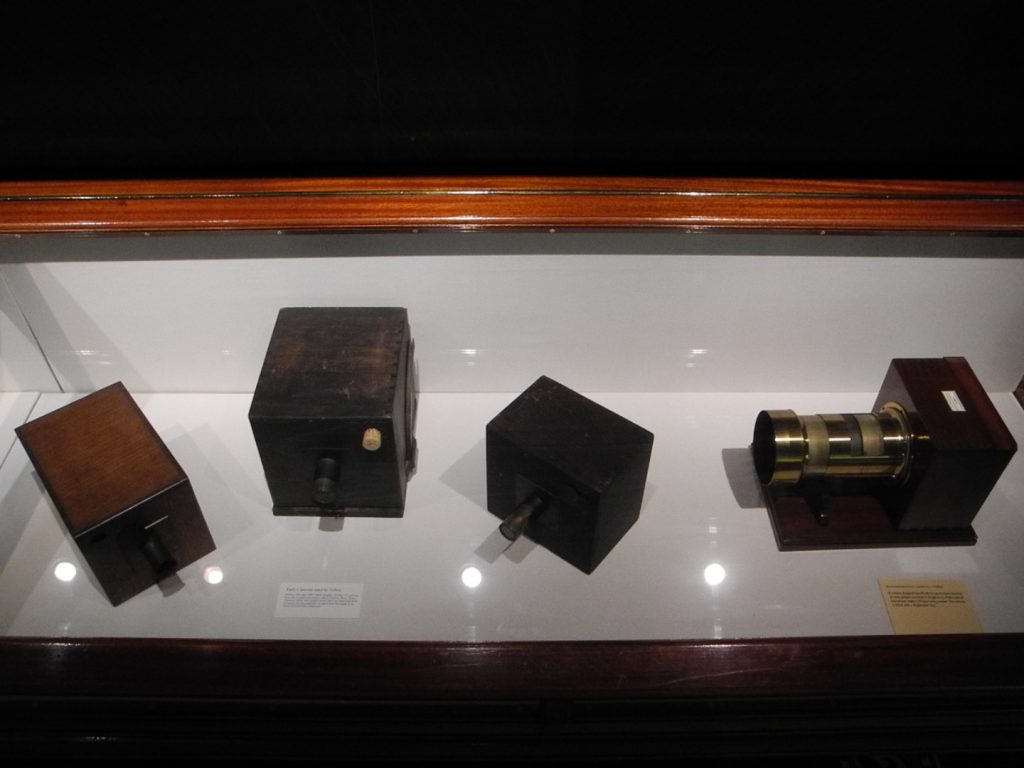
The glass case is a materialisation of a set of ideas about the political legitimacy of museums, a ‘material-discursive practice’ where ideas and political relations are materialised and play active roles in enabling and constraining new ideas and political relations (Barad, 2007, p 146). As Brita Brenna put it in a recent article on the heritage listing of glass cases in the Bergen Museum in Norway:
[…] glass cases are universal emblems of ‘the museum’. They are signs of museum-ness, of a particular way of making things both visible and out of reach. In museum literature the glass case has often figured as a synecdoche, as a part that stands for the whole (see for example Henning 2006). In a long tradition of museum critique, the glass case has been a metaphor for what museums do to objects. Museums, it is claimed, decontextualize objects, severe their bonds to any original context, and taps them for monetary and use-value.
2014, p 47
Alongside critical engagement in what glass cases do to objects, there has also been sustained interest in what exhibitionary forms do to people. In his work on nineteenth century museums Tony Bennett refers to an ‘exhibitionary complex’, which he defines as ‘a network of institutions in which earlier practices of exhibition were significantly overhauled in being adapted to the development of new forms of civil self-fashioning on the part of the newly enfranchised citizenry’ (2006, p 48). Bennett describes the ‘exhibitionary complex’ as linking the scopic regimes of the open public space of the exhibition with object-based displays. The consequence was to align new forms of evolutionary knowledge with imperial superiority, with the effect of placing ‘the visitors as the pinnacle of humanity’. The aim was, in his account, to produce new forms of ‘self-monitoring personhood and shared citizenship’ (1995, pp 63, 79).[3]
Yet even in twenty-first century museums, where there may also be interactives or participatory exhibits in the same space, glass cases still reflect aspects of the nineteenth century exhibitionary complex in terms of relations between objecthood and personhood that Bennett diagnoses (2005, p 536). The glass case, a material-discursive apparatus, I am looking at and into is actively doing particular ontological work – that is, it is itself producing a theory of what there is in the world: as Brenna goes on to argue, it is important not to treat glass cases as ‘”black boxes”; self-evident museum features that do not need further investigation’ (2014, p 48). The display case generates the demarcation between the objects on the one hand and me as a visitor on the other. Through this demarcation, it is implied that the object can be known about and this knowledge can be represented to the visitor. The glass case also, through its capacities to keep objects safe, produces a ‘time sense’ where the past is complete – the objects are no longer in use – and the future is yet to come. Finally, a political argument is modelled that the museum is an institution that can take on the responsibility to pass important objects on to future generations ‘on behalf’ of the visiting public. The glass case, as an access-barrier, offers a very particular and restricted version of the more general move in co-production in public policy to both pluralise and stabilise. The access-barrier of the glass case manages my engagement as part of justifying the legitimacy of museums’ political purposes and arrangements.
Community co-production in museums has, of course, been one of many responses to the limits of the exhibitionary complex of the glass case – beyond the kind of relationship implied by the idea of a ‘public’. Like co-production in a policy context, community co-production has sought to increase the variety of people, and often objects, which are involved in museum practice. An example here would be the Open Museum in Glasgow where community groups both curate the Glasgow accessioned collections in places that are important for them or are supported to curate their own collections (Glasgow Museums, 2010). Yet in community co-production in museums, there is also often a stabilisation process involved too, pluralising the numbers and diversity of people involvement while still seeking to hold in place specific arguments (as outlined above) for the public legitimacy of museum practices.
However, once more people and new forms of relationships are created then the twin moves of pluralisation and stabilisation can become problematic. This was demonstrated through Culture Shock!, a digital storytelling project through Tyne and Wear Archives and Museums (2008–10). Culture Shock! worked with people from across the North East to develop personal digital stories with the aim that the museum would officially accession them into the collection and treat them like any other object (of value and for display). Due in part to the personal nature of the story and the kind of social relationships developed with museum staff through the process of making the story, a very small number of participants – for whom something had changed personally – contacted the museum so they might alter their story after it had been formally accessioned. This led to a series of institutional negotiations which made visible the contested nature of ‘the object’ (was the story fixed and finished?) and had the effect of questioning the assumptions that museums’ legitimacy necessarily comes from making ‘objects’ publically accessible rather than cultivating responsive and reciprocal relationships with specific people and community groups (Graham, Mason and Nayling, 2013).
If co-production has a political rationality – aimed at both pluralising the number of people and stabilising the legitimacy of museums as institutions that can manage materiality and time in particular ways – then the Culture Shock! example indicates that this is highly uncertain. Once museum practices are opened up to more people – increased variety – then the variability of museum practices tends also to be opened up in unpredictable ways. This includes political challenges, as the museum studies literature attests (e.g. Lynch and Alberti, 2010; Lynch, 2011), but also, as we will explore through Science and Technology Studies, a necessary ontological challenge (e.g. Harrison, 2010; 2015). Community co-production tends to generate new theories of what museums are.
Co-production: Science and Technology Studies
https://dx.doi.org/10.15180/160502/003Museums can be thought of as an archetypal modern institution. While community co-production (alongside exhibitions and programmes) also produces uncertainties, as we have seen, museums can be read as producing demarcations between objects and people and as working on the assumption that the world can be known, represented and displayed, and they generate boundaries between inside the museum and the public outside, as between past, present and future. In other words, museums can be seen as working within ontologies of ‘metaphysical individualism’ – often linked to Newtonian physics and the Cartesian mind-body dualism of ‘I think, therefore I am’ – and an epistemology, a theory of knowledge, of ‘representationalism’. As Karen Barad draws the distinction:
Metaphysical individualism: (that the world is composed of individual entities with individually determinate boundaries and properties), and the intrinsic separability of knower and known (that measurements reveal the preexisting values of the properties of independently existing objects as separate from the measuring agencies).
Representationalism: the idea that representations and the objects (subjects, events or states of affairs) they purport to represent are independent of one another.
Barad, 2007, pp 123, 28
Science and Technology Studies (STS) has been concerned to seek alternative ontologies based on how things and people, nature and culture and the material and the semiotic are mutually productive, drawing on epistemologies which recognise the knower as intimately bound up in, and affecting, any ‘object’ of study. Or as Steve Woolgar and Javier Lezaun put it, STS has ‘an appreciation of fluidity in seemingly stable entities, a recognition of difference beyond claims to singularity (and vice versa), a reluctance to take the world at face value – to the realm of the ready-made, to the world of those entities whose being might seem most unproblematic and ordinary’ (2013, p 336). A key aspect of this has been to radically extend the number of ‘participants’ – involved to include things, plants and animals (Star and Griesemer, 1989; see also Reason, 2005) – sometime now framed as ‘more-than-human’ participation (Abram 1996; Bastian et al, 2015). This emphasis on interrelationships and co-constitution has led to these approaches being named ‘relational ontology’.[4] Within the field, the notion of co-production has become one way of articulating this relationality, ‘the conjoined production of one nature-culture’ (Latour, 1993, p 107).
Donna Haraway, a highly influential shaper of STS thinking, has argued that this means refusing both the notion that science produces objective truth (science-as-facts) and an ‘anti-science metaphysics’ (science-as-social construction) for a more complex and interdependent account of the world:
There are two aspects to emphasize when discussing biology. The first is: We live intimately ‘as’ and ‘in’ a biological world. This may seem obvious but I emphasize it to reiterate the ordinariness or quotidian nature of what we are talking about when we talk about biology. And the second aspect, which represents a major gestalt switch from the previous point, is: Biology is a discourse and not the world itself. So while, on the one hand, I live materially-semiotically as an organism, and that’s an historical kind of identity, immersing me – particularly in the last couple of hundred years – in very specific kinds of traditions, practices, and circulations of money, skills, and institutions, I am also inside biology as it is intricately caught up in systems of labor, systems of hierarchical accumulation and distribution, efficiency and productivity.
Haraway indicates here the way in which we are biological, in that we are organisms made up of cells, we adapt, grow and one day die. Yet we are also what we are because of biology, a scientific knowledge practice which is an active player in what it is to be alive in the twenty-first century. We are both organism and biology-as-a-discourse together. To give another example, the phenomenon of ‘cancer’ is cells and all of the ways in which it is known about and experienced. ‘Cancer’ is co-produced in that its variety of ingredients include tumour-producing genes, specific research practices that have produced understanding, people we know who have experienced cancer and died, news items telling you what to eat and not to drink, checking your breasts or testicles in the shower, Macmillan Nurse appeals, 10K charity runs and the hope for a cure. In this sense, STS has been focussed on resisting the argument that there is only either an unmediated ‘nature’ to which we can have access or only discourse; ‘matter and meaning cannot be severed’ as Karen Barad puts it.
In his 1993 book We Have Never Been Modern, Latour argues that ‘the word “modern” designates two sets of entirely different practices which must remain distinct if they are to remain effective, but have recently begun to be confused’. In his account, the work of modernity is to create ‘two entirely distinct ontological zones: that of human beings on the one hand and that of nonhumans on the other’ (1993, pp 10–11). Latour labels that distinction ‘purification’. The glass case comes to mind here. Yet, Latour argues, purification of nature and culture has always been accompanied by a second set of practices, ‘translation’ or ‘networks’, which create ‘mixtures between entirely new types of beings, hybrids of nature and culture’ (1993, pp 10–11), such as cancer, humans flying in aeroplanes or communicating via email. It is in this vein that Latour argues that hybrids abound, even though our epistemological practices have tried to maintain the distinctions at work in ‘this double creation of a social context and a nature that escapes that very context’. As a result, he concludes that ‘we have never been modern’ (Latour 1993, p 144).
There is no question that museums have sought to be ‘modern’ in Latour’s particular sense. In museums, forms of ‘demarcation’ and ‘purification’ are constantly underway. If we make a return visit to the glass case, the human visitor and the non-human object are separated, literally partitioned from each other. Yet, at the same time, there are also many kinds of hybrid at work within museums all the time, including the wider material discursive practices, what Latour calls ‘assemblages’ (2005a), in which the glass case is caught. This is one of the reasons that Latour has explicitly extended his argument to suggest that ‘museums have never been modern, either’; ‘no one has ever been modern, so museums have always maintained an extraordinary diversity of approach, always mixing art and science and antiquity in some way’ (Latour, with Franke, 2010, p 86).
Visit 2: Purification and hybridity
https://dx.doi.org/10.15180/160502/004Seen through the lens of STS, the glass case is hybrid, a ‘material-discursive practice’. Whereas it can seem as though the entities involved in the gallery are only me and the objects mediated by the glass – kept separate by ‘purification’ – there are, of course, many more things present. What I am looking at is an object-museum hybrid. For example – to consider the glass case as a political argument – the capacities of the glass case are used to manage the relationship between present demands of display and the future. Environmental conditions are maintained by passively limiting temperature fluctuation and regulating light level, levels which are measured and checked. The abstract idea of future generations is evoked not just by the security ensured by the glass and the management of temperature, but also by other entities in this hybrid assemblage – in collections management policies and documentation, and in the Government Indemnity Scheme necessary for the museum I am standing in to be insured against theft or damage. The cameras and I appear to be produced as object and subject – the effect of purification – but only if we ignore all the other entities that are gathered (though less transparently) in the gallery.
If we start to see these hybrids, then museums, having never been modern, already have alternative co-productive ontologies present and waiting to be nourished. Something that considering not only the glass case itself but the invention of photography – the focus of the Kodak Gallery display – will allow us to articulate more specifically.
Phenomena as the ‘basic unit of reality’
https://dx.doi.org/10.15180/160502/005So far we have used co-production in the STS sense to explore some of the ontological assumptions made by museums as actualised in their glass cases. We have also, through the STS elaboration of co-production, recognised the hybrids and networks of alternative, non-modern, ontologies already present in museums (and even in glass cases), all full of potential for developing an idea of a museum which might be thought of as ‘co-productive’. In this section, I develop another layer in our conceptualisation of co-production, one which has specific resonances for museum practice and community iterations of co-production. In STS, ways of conceptualising co-production abound, the most common – as we have seen – are ‘hybrids’, ‘assemblages’ (Latour, 1993; 2005b) but terms also used are ‘infolding’ (Haraway, 2006) and ‘entanglement’ (Barad, 2007). Each word aims to evoke the way ‘matter and meaning’ and ‘word and world’ and are in relationship to each other. While these words very effectively capture spatial and conceptual co-constitution, ideas of time (so crucial to museums) are less obviously present.
Karen Barad, engaging STS using quantum physics, suggests a vocabulary that brings time into view. Barad draws on the work of physicist Nils Bohr to develop the concept of ‘phenomena’ as the ‘primary ontological unit’, the ‘basic unit of reality’ (2007, p 25). Barad uses the idea of ‘phenomena’ as a way of reworking the modern ontology of metaphysical individualism and its notion of ‘independent objects with independently determinate boundaries’, and representationalism: that the world exists outside and separately from attempts to know about it. Phenomena are made up of what Barad terms ‘intra-actions’, distinguished from ‘interactions’, ‘the notion of intra-action recognises that distinct agencies do not precede, but rather emerge through, their intra-action’ (2007, p 33).
Barad’s account engages and extends Bohr’s ontology, associated with the emergence of quantum physics. Where classical physics assumes that something can be observed independently and without affecting it, Barad outlines how debates in quantum physics challenge this assumption by showing that any measurement, and measuring apparatus, is itself affected by the act of measuring. The category of ‘phenomena’ is a useful way of conceptualising intra-relations, Barad suggests, as it draws attention to the way in which any attempt to know something becomes part of the process of producing and being produced. Barad argues that a relational ontology, given impetus by quantum physics, ‘does not take the boundaries of any of the objects or subjects of these studies for granted but rather investigates the material-discursive boundary-making practices that produce “object” and “subjects” and other differences out of, and in, a changing relationality’ (Barad, 2007, p 33). To put it another way, the basic unit of reality is not an object or a person nor is it a moment in time or a particular place, it is the mutual entanglement and mutual production of differentiation; not only of ‘objects’ and ‘people’ and ‘matter’ and ‘representations’ but also ‘space, ‘past’ and ‘future’.
Visit 3: As a phenomenon
https://dx.doi.org/10.15180/160502/006During this third visit to the glass case we will think about the encounter in the gallery as a phenomenon in Barad’s terms. The case we’ve been looking at contains four wooden boxes, described on the label as ‘Early Cameras used by Talbot’, referring to William Henry Fox Talbot, one of the early inventors of photography. Thought of as a phenomenon of intra-action, the entities already identified in our previous two visits are intra-acting and producing boundaries and differences: between me, the glass case, the cameras. However, the phenomena in which we are caught also include the intra-actions that produced the boxes as cameras and the part they played in the production of photography.
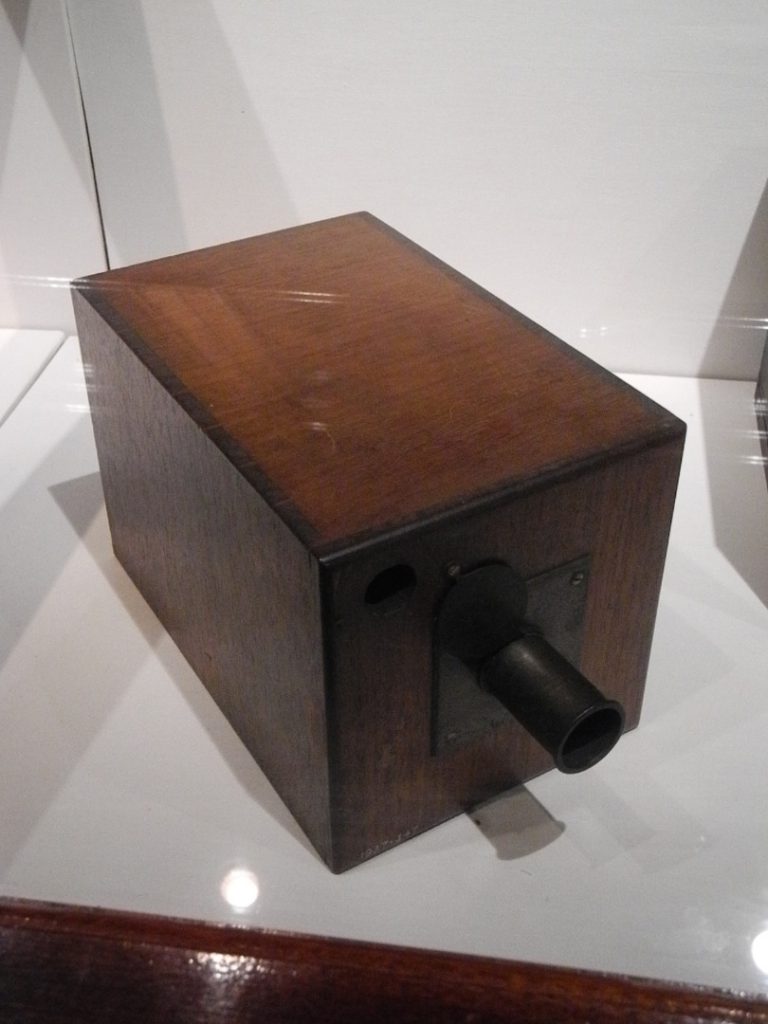
Fox Talbot offers an account of his invention in The Pencil of Nature (published in six instalments between 1844–46). In some places a metaphysical individualism could be said to be at work, Talbot describing the images in The Pencil of Nature as having ‘been obtained by the mere action of Light upon sensitive paper’. Yet, in the introductory pieces and in the narrative which accompanies each of the images, The Pencil of Nature also presents an ‘undecided view’: as Vered Maimon has argued, ‘on the one hand [The Pencil of Nature shows], the desire for an origin or a ground, on the other, the recognition that time disperses and dismantles any claim for the unity or consistency of knowledge’ (2008, p 319).
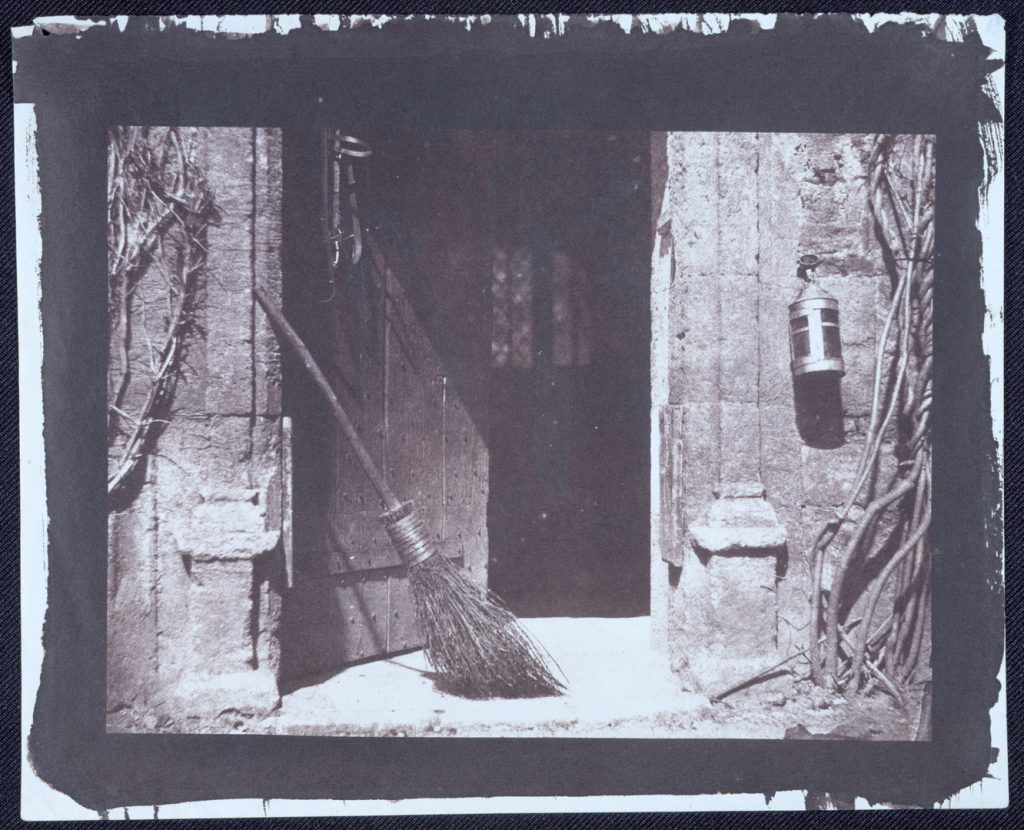
Part of this ‘undecided view’ includes the uncertainty of the process of making the images included in The Pencil of Nature. Fox Talbot’s account is intimately concerned with the hybridity of photography; the lived experience of bringing together light, chemicals and the desire to materialise memories. In a section titled ‘Brief Historical Sketch of the Invention of the Art’, Fox Talbot opens with a biographical account of his motivation, ‘one of the first days of the month of October 1833, I was amusing myself on the lovely shores of the Lake of Como, in Italy, taking sketches with Wollaston’s Camera Lucida, or rather I should say, attempting to take them: but with the smallest possible amount of success’ (‘Brief Historical Sketch of the Invention of the Art’, 1844). Fox Talbot then goes on to share the hit and miss of experimentation: ‘In the course of these experiments, which were often rapidly performed, it sometimes happened that the brush did not pass over the whole of the paper, and of course this produced irregularity in the results.’ As the areas on the paper less effectively covered appeared the most sensitive this led Fox Talbot to realise he needed a less perfect chloride (less salt): ‘…what was required (it was now manifest) was, to have a deficiency of salt, in order to produce an imperfect chloride, or (perhaps it should be called) a subchloride of silver’ (‘Brief Historical Sketch of the Invention of the Art’, 1844).
Barad argues that delineating phenomena, ‘matter does not refer to a fixed substance; rather, matter is substance in its intra-active becoming – not a thing but a doing, a congealing of agency. Matter is a stabilising and destabilising process of iterative intra-activity’ (2007, p 210). The paper, salt, silver, cameras, Fox Talbot’s embodied (and sometimes sloppy) technique of brushing, the images in The Pencil of Nature and his writing about them, are the intra-active becoming of ‘Fox Talbot’s photography’ in which I, as a visitor, am now also caught.
Space and time and matter
https://dx.doi.org/10.15180/160502/007To turn more directly to time, Barad uses the idea of the ‘becoming’ of phenomena to challenge the assumptions that metaphysical individualism makes about time and space, of time as ‘an external parameter’ and space as a ‘container’ (2007, p 179). Barad argues:
The past is never left behind, never finished once and for all, and the future is not what will come to be in an unfolding of the present moment; rather the past and the future are enfolded participants in matter’s iterative becoming. Becoming is not an unfolding in time, but the inexhaustible dynamism of the enfolding of mattering.
2007, p 234
There are two points to draw out here. The first is that matter is the past in the present – it is ‘congealed agency’. So when Barad says the past is never ‘left behind’, she evokes the way in which what matter is has been made up through its intra-actions, ‘sedimented historialities of the practices through which it is produced as part of its ongoing becoming’ (2007, p 180). Fox Talbot’s cameras are congealed agency that enabled certain things (focusing light) and are what they are now (part of the ‘invention of photography’) through the intra-actions of which they were part. The objects in the gallery are sedimented practices and, through their collection and display, they are drawn into new phenomena of exhibition in the gallery.
The second point is that intra-actions are not in time as ‘an external parameter’ but actively making time. Barad emphasises this point by fusing the term spacetimematter to emphasise their co-production and mutual constitution. Spacetimematter is what is ‘produced through the iterative enfolding of phenomena’ (2007, p 180). Drawing the two points together Barad gives the example of rings in a tree which mark ‘their intra-actions within and as part of the world’. Barad notes that trees and their rings are a helpful but also limiting metaphor, ‘the point is not that time marches on, leaving a trail of sedimentation to witness the effects of external forces of change. Sedimenting is an ongoing process of differential mattering’ (2007, p 181).
There are two implications for our argument here. The first is to read this through another visit to the Fox Talbot display to explore the interplay of space, time and matter. The second, which will come later, is to explore the political potentials for community co-production in museums which a co-produced approach to matter, space and time might generate.
Visit 4: Spacetimematter
https://dx.doi.org/10.15180/160502/008The phenomena which are Fox Talbot, the camera, the silver nitrate, sub-chlorine, the glass, the open door and the broomstick are also, Barad might suggest, productive of specific spacetimematter. The reason Fox Talbot even began his experiments, of marshalling and working with the agencies of light, sliver and salts, was ‘duration’, as he writes in The Pencil of Nature:
[…] this led me to reflect on the inimitable beauty of the pictures of nature’s painting which the glass lens of the Camera [Obscura] throws upon the paper in its focus – fairy pictures, creations of a moment, and destined as rapidly to fade away.
It was during these thoughts that the idea occurred to me…how charming it would be if it were possible to cause these natural images to imprint themselves durably, and remain fixed upon the paper!
Brief Historical Sketch of the Invention of the Art
For Fox Talbot photography was related both to durability of the image but also (unlike Daguerre’s invention) the ability to make copies. Fox Talbot was engaged in producing spacetimematter that was composed of a materialized memory, producing a future and a space which was more-than-one-place-at-the-same-time.
Yet the spacetimematter of Fox Talbot’s photography was and remains (in today’s museum collections) materially uncertain. In the National Media Museum, the fragility of the spacetimematter produced by Fox Talbot’s photography is present within the phenomena of the gallery encounter with the cameras only in the sense that the original photographs are not present. One Fox Talbot negative – Latticed Window at Laycock Abbey (1835) – held by the National Media Museum is kept in a box and looked at very rarely for fear that one more intra-action with light might erase the fragile image and the hope for its duration (Harding 2013).
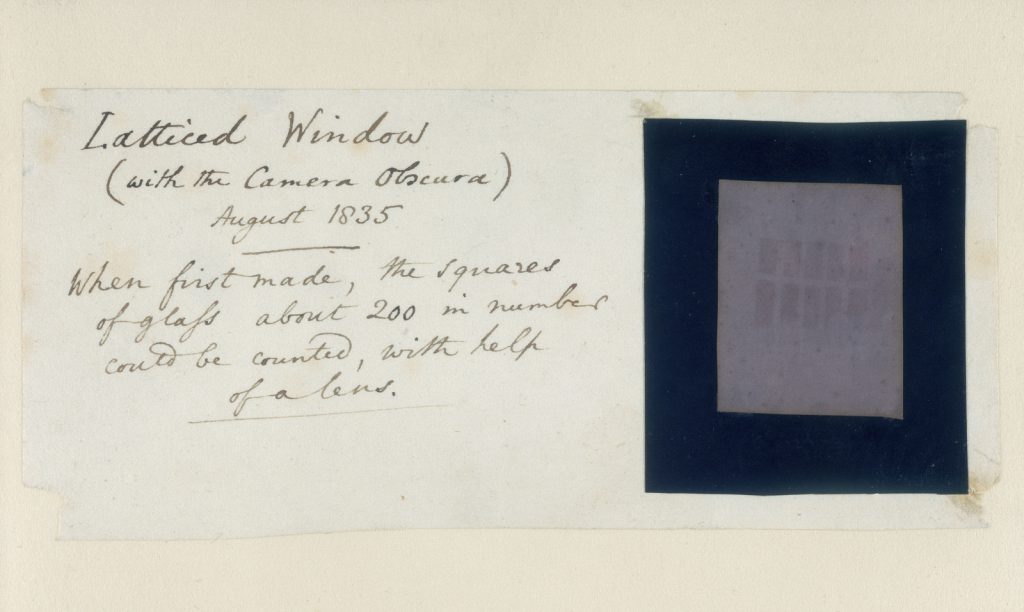
To think of museum collections more as processes, things which are congealed agencies of phenomena – produced through uncertain intra-actions – creates two possibilities for re-reading community participation as co-production. The first is to recognise fundamentally that knowledge, or anything, is always produce through interrelationships; it is emerging, shifting and reforming. This creates an ontological and epistemic basis for museums to extend their commitment to enabling more people to be active players in knowledge production and invention through cultivating and making more explicit the already-existing hybrid relationality between people, things and the world. The second is that it challenges the temporal assumptions generated by museums and their glass cases that we identified earlier – that the past is complete and the future is yet to come and best serviced by the institution and its structures – and indicates instead the necessity of political alternatives.
For participation?: Co-productive museums
https://dx.doi.org/10.15180/160502/009As we have seen, Barad, Haraway and Latour all complicate science and social construction as epistemic forms, instead drawing our attention to co-productions, hybrids, infoldings, entanglements, phenomena and intra-actions. What they also all share is a belief that an ontological shift is one which opens up different political potentials (Woolgar and Lezaun 2013; 2015). For Latour, this is for ‘bringing nature into democracy’. For Barad, this is framed in the language of ethics and justice. For Haraway, this is for a feminism which is for ‘a way out of the maze of dualisms in which we have explained our bodies and tools to ourselves’ (2004 [1985], p 39). Motivated by these slightly different political desires, Barad, Haraway and Latour also share a commitment to ‘responsibility’, a sense that the purpose of co-production, as an ontology based in relationality, is to distribute more widely action in, and responsibility for, the world. To quote Haraway, it is about ‘pleasure in the confusion of boundaries and responsibility in their construction’ and it is about ‘both building and destroying machines, identities, categories, relationships, space, stories’ (2004 [1985], p 39). This is how we will draw back together our two genealogies of co-production for, what we might think of as a Co-productive Museum.
As I explored in the first part of the article, co-production in the public policy sense is characterised by a belief that outcomes of various kinds are likely to be better if they involve those concerned, whether constructed as citizens or as service users. Yet co-production in this iteration is also ontologically slippery. It is not always clear whether this is seen just as a better way of getting to the same goal, such as no crime or a healthy population, or whether co-production is expected to transform more radically the ‘it’ being produced. This question has been echoed in the museum community co-production debates. Is community co-production a process about training young people or adult collaborators to be curators in producing exhibitions in the same way as ‘professionals’ and to the same notion of ‘quality’? Or is the purpose of their involvement to transform what ‘it’ is and, through this, transform also notions of quality?
Whether it is possible to reinvent governmental and public institutions for the twenty-first century is part of what is at stake in the public policy approaches to co-production. Iterations of public policy approaches to co-production have implied that more people being involved can improve public services while also stabilising their legitimacy. Yet drawing in an STS genealogy of co-production suggests that a more imaginative and ontologically expansive development of political legitimacy might emerge. It is through this that co-production, conceived in its more fundamental ontological sense, can be seen as a crucial way for museums to recast their public, epistemic and political roles. We will draw this article to a close by exploring this more practically under ideas of political agency and political legitimacy.
Political agency: distributed responsibility for the world and the future
https://dx.doi.org/10.15180/160502/010The form of political agency imagined in Bennett’s account of the ‘exhibitionary complex’ is that of a ‘self-fashioning’ citizen generated through the mutually regulating gaze of public spaces and through an epistemic sense of superiority over the colonies. However, as Bennett has more recently argued, it is likely that quite different consequences for the relationships between objecthood and personhood are at work today through the glass case as a material-discursive apparatus (2005, p 536). As Nigel Thrift has put it: ‘…the content of what is present in experience has changed radically’ (Thrift, 2008, p 2). A crucial concern opened up by the relational and intra-active ontologies we have been exploring is political agency. Barad frames her account of phenomena as an ‘ethico-onto-epistemology’ (Barad, with Dolphijn, R, and van der Tuin, I, 2012, online), one that also ‘reconfigures the possibilities for change’:
[…] intra-actions not only reconfigure spacetimematter but reconfigure what is possible. Ethicality is part of the fabric of the world; the call to respond and be responsible is part of what is. […] Questions of responsibility and accountability present themselves with every possibility; each moment alive with different possibilities for the world’s becoming and different configurations of what may yet be possible.
Barad with Dolphijn, R, and van der Tuin, I, 2012, online
In a time when ‘people seem to be losing their faith in their ability to shape the future’ (Grossberg, 2010, p 62), the key political argument implied by the glass case can easily be read as preventing the wider distribution of political responsibility for the world, which Barad evokes. As we have seen, the glass case is a ‘material-discursive’ argument, and it is one which seems to say, ‘caring for the future is not your responsibility. The future has been delegated to the museum.’ It seems to say, ‘you might care and you might want to take responsibility, but we need you to step back in the interest of everyone else now and everyone yet to be born.’[5] Drawing the two genealogies of co-production together offers the potential for museums to take seriously the ways in which their displays, programmes and community projects produce, or constrain, the potential for recognition of responsibility and accountability in, and for, the world.
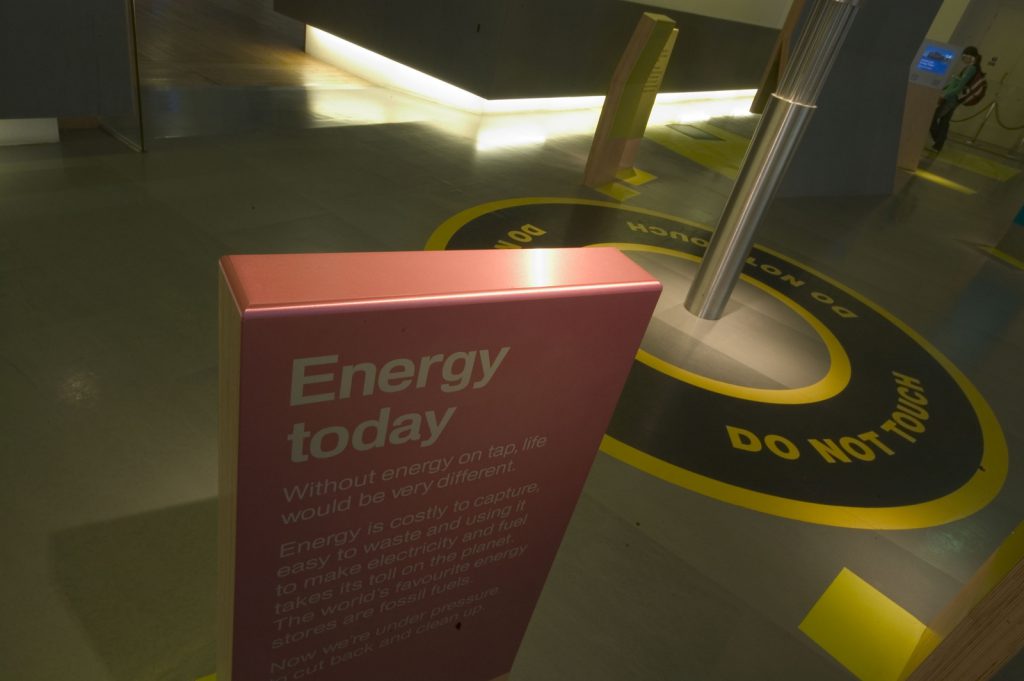
In terms of community participation, Co-productive Museums might draw on two insights of relational ontology to look for ways of distributing responsibility for producing a future for collections. In a recent research project, ‘How should heritage decisions be made?’, a team of us explored how the Science Museum might develop its electronic music collection by drawing on the expertise and networks of fans, musicians, journalists and composers. Crucially – as argued earlier – the collaborative exploration of what should be collected also opened up a wider ontological debate. As Martin Swan, one of the co-collecting team and a musician and educator put it:
If you engage the network of geeks out there then you create a community with ‘a curatorial head on’. They will say – ‘we will look for those things’. You’re creating a community of curators. But as soon as you stop playing them, synths start to decay. They become less and less the thing that made them worth collecting. As they become less and less viable as instruments, they also become less and less interesting to the geeks, the very people who would want to enthuse about the objects to other people. And these are also the people who could maintain them and could get them going again.
Heritage Decisions, 2015, p 34
Martin indicates that traditional forms of making things ‘objects’ (where they become seen as fixed, and separate from other things and people) and justifying this through notions of posterity are ontologically flawed. If you treat synthesizers in this way, they stop being the thing that made them worth collecting. Co-production – between the synthesizers, social networks of musicians and enthusiasts – indicates a way in which groups of interested people might take responsibility for museum collections. Co-production allows an alternative reading of care which, through the careful use and enlivening of collections, helps synthesizers as musical instruments be the thing-which-made-them-worth-collecting. The phenomenon of electronic music includes synthesizers and music and fans, clubs, large commercial companies and lots of teenage bedrooms). Co-production also generates the potential for an alternative reading of ‘future’; no longer a future institutionally secured by keeping people on the other side of glass but a future-constantly-becoming as things and people intra-act.
Visit 5: Alternative times
https://dx.doi.org/10.15180/160502/011To return for our final visit to William Henry Fox Talbot, the cameras, the glass case and all the phenomena and spacetimematters of making images, the glass case in the Kodak Gallery at the National Media Museum might evoke the phenomena and not only the camera as an object. By fixing the cameras as objects, locating them into a completed past and for a future implicitly secured by the museum, what the Kodak gallery offers is substantially different from the intra-actions in which the cameras were entangled. Unlike National Media Museum publications which offer very nuanced accounts (Burbridge, 2015), the display (produced in the 1990s) itself tells us less than it might about the iterative intra-action which was the ‘invention’ of photography. Jim Bennett has made this point about the presentation of scientific knowledge in museums more generally where there is often a danger of presenting science as always-already produced and stable. There is a need, Bennett argues, for cultivating a sense of the uncertainty and ‘unpredictability of experiment’ in displays (1998, p 175).
Part of bringing co-production into the heart of what museums are is a richer politics of display which might take phenomena, rather than objects, as the starting point and which might trace and evoke the different plural ‘co’ at work. These would be displays which might productively engage a sense of ontological uncertainty and exploration of responsibility for constructing knowledge.
Political legitimacy: museums and assembling ‘matters of concern’
https://dx.doi.org/10.15180/160502/012The implications of co-production in certain iterations of STS is, as we have seen, to understand ontology, epistemology and politics as fully interconnected. As a result, we cannot know in advance what any political issue is and might be; all issues have to be made or composed (Latour, 2005b, p 35). Latour names this process of constituting issues materially and semiotically ‘making things public’ (2005b) and, through playing with these different connotations of representation (in both epistemology and democratic theory), argues that we should jettison ‘matters of fact’ (representationalism) and instead focus on the collaboratively building of ‘matters of concern’.
Latour offers this as a way of bringing together ‘two different meanings of the work of representation that have been kept separate in theory although always remained mixed in practice’ (2006, p 16) and calls for ‘a parliament of things’ (1993, p 143) or an ‘object-orientated democracy’ (2005b, p 16). In doing this Latour uses the generative capacities of the difference between ideas of ‘assembling’ in his work (tracing the hybrid associations or infoldings) and ‘assembly’ (as in parliament) in democratic political theory (2005a). Latour asks: ‘…can we overcome the multiplicity of ways of assembling and disassembling and yet raise the question of the one common world? Can we make an assembly out of all the various assemblages in which we are already enmeshed?’ (2005b, p 37).
As part of reimagining their public role, museums – as many have noted – have potential to shape public debate, be activists, challenge prejudice, take an active role in urgent debates and in making a ‘common world’ (Sandell, 2007; Janes, 2009; Dibley, 2011; Harrison, 2010; 2015). Part of this work needs to be ontological, epistemological and political, seeing gallery spaces as places where issues are not packaged up neatly but where the necessary work of composing issues through intra-actions between things, ideas and people can take place. In York we’ve recently been exploring this process through a pilot project ‘Histories Behind the Headlines’, exploring how the city’s heritage (archives; memories; built environment) can be brought into participatory debates about the future of the city, with the aim in 2016 of feeding into the Local Plan process which will determine planning and development over the next twenty years (Graham, 2015a). Through the project taking a focus on housing, an urgent issue for the city, it has been very clear that a Local Plan process is not only epistemic and political but also ontological, it is about bringing what ‘York’ is into being (Graham, 2015b). This necessarily combines lots of different people and housing but also (called into specific recognition through the flooding in December 2015) the catchment areas of the River Ouse and River Foss, various land and water management approaches upstream, the workings (and failures) of various types of flood barriers and questions of public investment in the light of UK government austerity measures. One question we will be developing is how the composition of ‘what York is’ includes a political process which recognises the agencies that are ‘more-than-human’ are bound up in what the city is (Abram 1996; Bastian et al, online).[6]
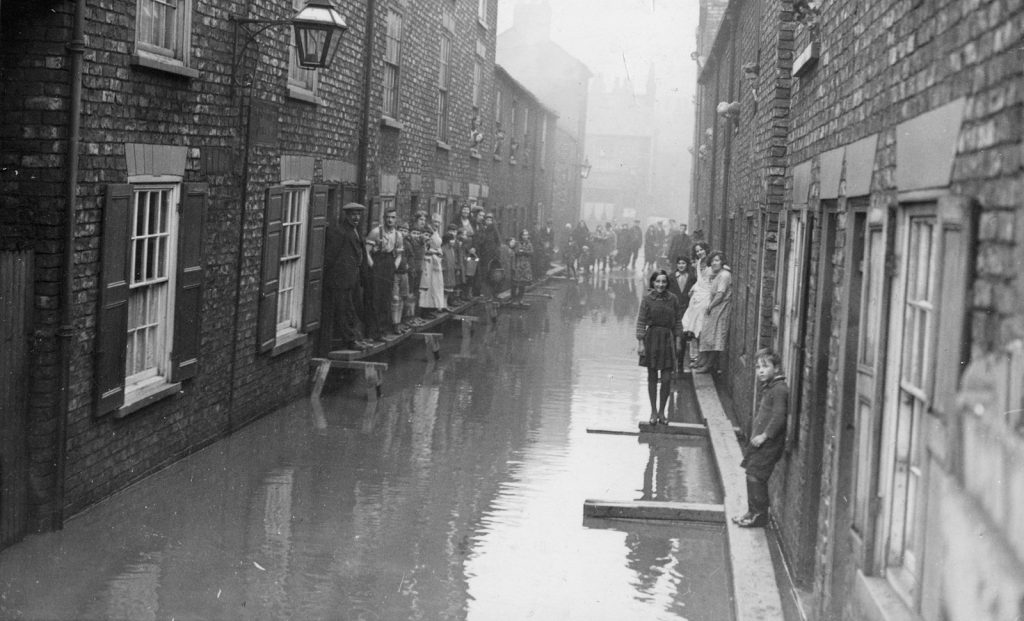
Urgent issues, whether housing or flooding, are ontologically as well as epistemically contested. In this context, museums might conceive themselves as assemblies (in both Latour’s senses) where what issues are can be carefully made up between different participants: people, things and the wider world.
Changing change: Co-productive Museums
https://dx.doi.org/10.15180/160502/013‘It is up to us to change our ways of changing’ (Latour, 1993, p 145)
In this essay I have held together two genealogies of co-production and explored how the co-production that has emerged from Science and Technologies Studies might infuse co-production between public agencies and communities, the most usual referent for co-production in museums. Linking these two genealogies is crucial because attempts to increase the variety of people involved in museums while seeking to hold the political ontology of museums in place has not worked well and has, as the literature attests, too often generated frustration and anger.
While many commentators have drawn attention to the political dimensions of this (ownership and control), underlying it is also an ontological contestation: what the ‘it’ is which is being produced. As we saw with the example of the synthesizers, Martin Swan contests whether the traditional methods have, in fact, ‘preserved’ the synthesizers. The synthesizers need, he suggests, to be actively played and be actively cared for as part of a network of musicians and fans to enable them to be the thing that made them worth collecting.
A museum which thinks of itself as a Co-productive Museum might seek to draw on the hybridity always present in museum practice to avoid reproducing a metaphysical individualism that assumes objects exist independently from their intra-relationships. Instead, museums might seek, following Barad, to evoke phenomena as a ‘basic unity of reality’. In the examples I’ve used, the phenomenon of electronic music has included synthesizers, music, skilled musicians, fans, technological development and mass production. Similarly, Fox Talbot’s cameras are only one ‘congealed agency’ within a much more complex, ontologically-uncertain process which was becoming ‘photography’ in the 1830s and 1840s.
Crucially, co-production indicates the potential for different ways of thinking about politics and change. It might help those working in museums to explore the political arguments implied by traditional museum practices – not least adjusting the implications that caring for the future is best delegated to institutions rather than being thought of as a distributed and shared responsibility. In the case of the electronic music ‘community of curators’, care comes not through delegation but through an engaged ‘wise use’ (which is, after all, one of the meanings of ‘conservation’).
More broadly, Co-productive Museums might be a places where the issues that affect the world (from climate change, housing to cancer) can be assembled and, through this ontological and epistemic work, new political methods and possibilities might emerge. A Co-productive Museum is one which recognises the pluralities of ‘co’ of which it and the world is comprised, and sees itself as shaped through, and responsible for producing, the intra-actions between things and people.
We started with, and have repeatedly returned to, the glass case, a key tool in museum practice. We’ve done this as a way of noticing what ontological assumptions the glass case as a ’material discursive practice’ makes – that objects and people can be distinguished and separated – as well as the political argument the glass case implies (that the institution can best manage the preservation of material culture for the future). We’ve then used the hybridity always-ready present in the glass case to explore alternative relational readings of museums informed by community co-production and co-production in an STS mode. A key way forward for museums is to recognise that this is only one possible argument for their political legitimacy, and one which is fast losing currency. Co-production – our fused, conjoined reading of it here, which is itself co-produced through two genealogies – indicates that the future of museums lies not in their taking that responsibility on their own, nor delegating it to the ‘material-discursive’ formation that is the glass case. Instead, a Co-productive Museum is one which distributes that responsibility and models the ways in which the future is the responsibility of all of us.
It is very unlikely that any significant political question of our time can be addressed without slow careful work which takes very seriously both of the meanings of co-production I’ve explored here. Museums – with their potential to develop different ontological, epistemic and political spaces – have a crucial role to play in this work. It is when both meanings of co-production – community participation and more-than-human participation – become attended to together that we have the makings of a Co-productive Museum.
Acknowledgements
I would like to thank the Heritage Decisions Research Team as a whole but especially the Science Museum Co-Collecting team: Tim Boon, Jean-Phillipe Calvin, Richard Courtney, David Robinson and Martin Swan for incredibly thought-provoking conversations. Special thanks to Tim Boon for commenting on earlier drafts of this article. I’d also like to thank my collaborators in York, Lianne Brigham and Richard Brigham, Peter Brown and Victoria Hoyle for the conversations is making our current ‘Histories Behind the Headlines’ project possible. Final thanks to the University of Leeds MA Art Gallery and Museum Studies students in the In/Tangible History and Heritage module 2014–2015, we first explored together many of the ideas that have cohered in this article. I would also like to thank the anonymous reviewers of the article who made a number of useful suggestions.
‘How should heritage decisions be made?’ was funded by the Arts and Humanities Research Council’s Connected Communities programme.
Tags
Footnotes
Back to text
Back to text
Back to text
Back to text
Back to text
Back to text

